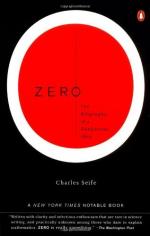
|
| Name: _________________________ | Period: ___________________ |
This quiz consists of 5 multiple choice and 5 short answer questions through Chapter 8.
Multiple Choice Questions
1. What refers to the branch of mathematics concerned with finding tangent lines to curves, areas under curves, minima and maxima, and other geometric and analytic problems?
(a) Quantum mechanics.
(b) Geometry.
(c) Infinitesimal calculus.
(d) Algebra.
2. What rule in calculus uses derivatives to help evaluate limits involving indeterminate forms?
(a) General relativity.
(b) L'Hôpital's rule.
(c) The Golden Ratio.
(d) The Pythagorean Theorem.
3. An electron has what kind of electric charge?
(a) Neutral.
(b) Positive.
(c) Negative.
(d) Degenerative.
4. In 1996 and 1997, the USS Yorktown was equipped with a network of how many dual 200 MHz Pentium Pro-based computers running Windows NT 4.0?
(a) 10.
(b) 27.
(c) 14.
(d) 35.
5. The ancient Egyptians used math to create what type of calendar?
(a) A lunar calendar.
(b) A geocentric calendar.
(c) A solar calendar.
(d) A plexus calendar.
Short Answer Questions
1. Copernicus developed what kind of model of the universe?
2. The operation of finding the area under a curve is now called what, according to the author in Chapter 5, “Infinite Zeros and Infidel Mathematicians”?
3. Pythagoreanism developed into two separate schools of thought. What group was called “the learners” in Greek?
4. What word did the Arabs use for zero during Muhammad ibn Ahmad al-Khwarizmi’s time?
5. What refers to the geometric theory of gravitation published by Albert Einstein in 1916 and the current description of gravitation in modern physics?
|
This section contains 237 words (approx. 1 page at 300 words per page) |

|




